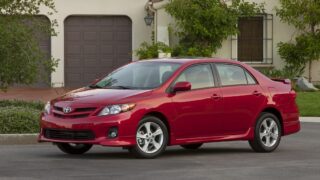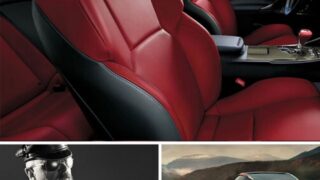Lexus LFA & Acura NSX: Two Decades of Engineering Excellence
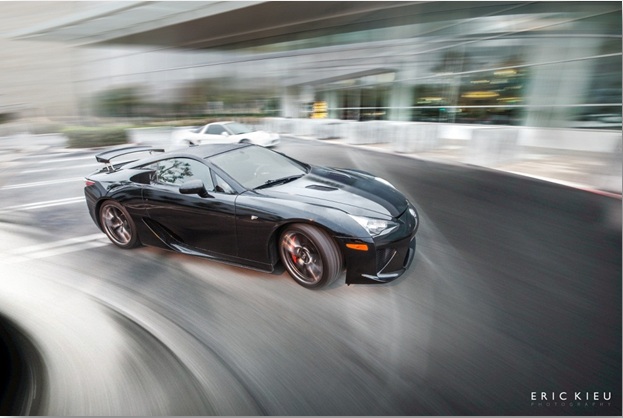
As I stepped out of the LFA at the local Cars & Coffee, a young boy walked up to me and said, “I am so jealous that you are driving this $400k supercar!” I smiled and responded, “This is an awesome car but it’s not mine; I am just driving it for the weekend.” “Oh you are so lucky! What car do you drive?” I pointed to the NSX that my friend parked beside the LFA, he looked over and said, “The NSX is still a very nice car! They are both crazy cars from Japan…”
While surprised that he knew about the NSX, I couldn’t help but commend what Honda and Toyota have done. They are not Ferrari and Lamborghini; they are on different business models to make economical and reliable vehicles. But yet, out of nowhere they popped out these incredible driving machines.
Japanese automakers have built fast cars over the years. Toyota had the Supra, Nissan has the GTR, Mazda had the RX7, Subaru has the STI, and Mitsubishi has the Evo. They can be very fast, for example the Nissan GTR beats a lot of supercars for a fraction of the cost. However, being a supercar versus an exotic are still two very different things. To be an exotic, a car must carry more soul, attitude, and distinctive styling that make people turn their heads. Looking into the past 20 years, the LFA and NSX are probably the two lone Japanese occupants in this category. How do they fare with each other?
Before anyone jumps the gun, this is not your everyday track or paper spec contest. Having driven both extensively, the LFA wins in every performance comparison. It accelerates faster, brakes harder, sounds sexier, and is rarer. But one would argue that it is much newer and costs about 4 times that of an NSX, when new. So I want to focus on how these cars inspire driving fun and most importantly what they have done to the brand names.
Acura NSX
Honda established their position in racing and sports car market back into the early days. One of their early production cars, the S600, was considered a big success for the company. Available in roadster and fastback coupe forms, the car was very well received for its styling and performance. Its successor, the S800, continued to bring advanced technologies to performance and handling. The car was one of the fastest 1-liter cars in the market.
Only few years into producing their first road car, Honda entered the Formula One Grand Prix racing in 1964. Even more impressive was the fact that they developed their own engines and chassis, allowing them to be ahead of competitors in racing technologies. Before Honda exited Formula One in 2008, they had participated on and off as entrant, constructor, and engine supplier. Arguably their best era was the 1980s when they were the engine supplier to 6 constructor champions and 5 driver championships, including legendary Ayrton Senna.
It was also during this time that Honda commissioned the NSX project to showcase their technologies and experiences in motorsports, aiming at the Ferrari 328 and promised to make something better, faster, reliable, and affordable. The final mid-engine masterpiece was so ahead of its time it was like nothing from Japan before. The car was sold as an Acura, Honda’s premium brand, here in the US and Honda for most other regions.
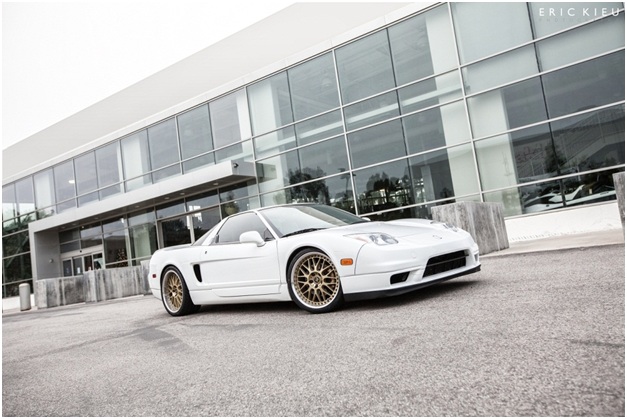
It was the first production car with an all-aluminum body, saving more than 400 lbs. over traditional steel equivalent. The 3.0L V6 engine pumped out an impressive 270hp, utilizing proprietary VTEC system and impressive 8000rpm redline. It was also the first production car to utilize titanium alloy connecting rods, weighing less while being significantly stronger than steel equivalent.
Honda did not stop there. To offset the added weight of the targa top, in 1997 the engine was upgraded to 3.2L 290hp and paired with a 6-speed transmission. But to counter the weight increase of the new transmission and larger brakes, body parts were made with new 6000 series aluminum alloy that’s up to 50% stronger, allowing panels to be thinner without compromising strength. For example the thinner doorskin saved close to 5 lbs. with the new alloy. Honda revised the vehicle again in 2002 with a fixed headlight design that was 17 lbs. lighter, an increased front spring rate setup, a larger diameter rear stabilizer bar, and a new front air dam that reduced the drag coefficient from 0.32 to 0.30.
When the NSX came out in 1991, the $60k price point probably scared away most typical Honda owners, but it was a bargain compared to the Ferrari 348. It is a no brainer that the NSX was labeled as “a poor man’s Ferrari,” I think it shows how Honda changed the game. Cover up that badge and Honda made something better and faster for less money. In fact, a lot of NSXs are still running strong at over 150k miles today, whereas if you see a Ferrari 328 or 348 with more than 70k miles it’s almost considered a miracle.
Arguably one of the best things about the NSX is how good it drives. You sit really low in the car and since the engine is placed behind you, it allows the hood to stay low for good visibility. You easily lose track of how fast you are going because of how comfortable the car is. Everything feels so mechanical and “old school”, there is nothing fancy and you are in control of everything, plain and simple.
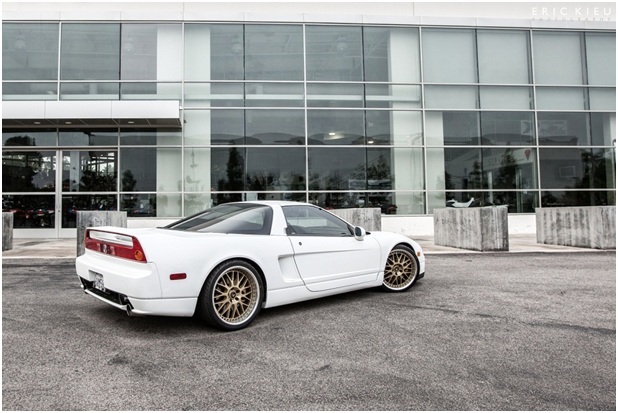
The car handles extremely well thanks to the mid-engine configuration. With a 42:58 front/rear weight distribution, the car feels very nimble, responsive, and predictable when tossed around. However, due to the rear-heavy design, once you break traction, the rear tends to spin out more easily and is harder for driver to correct. The Traction Control System (TCS) kicks in to help cut off throttle and apply braking, but it is more of a damage control at that point.
High-end brakes like Brembo were not common, but I feel the NSX could use better factory braking. The setup works well in daily driven conditions, but at high speeds the car doesn’t slow down as quickly as I wish. The car is also too quiet for what it is. Even in the high RPM range it is not that loud, missing a bit of that exotic car exhaust tone.
The NSX was the first production car to utilize a full electric power steering system as opposed to the traditional hydraulic setup. It allowed engineers to easily tune the handling and steering feedback at various speeds, and most importantly it’s lighter and more compact, while not stealing precious power from the engine.

But the steering is also my biggest complaint because of the poor ratio. It has a variable ratio of 18.2:1 to 20.8:1 and takes 3.24 to turn lock-to-lock, noticeably worse than a lot of other sports car so you have to turn the steering wheel more to achieve the same turns. This is probably not a big deal if you are blasting through a high-speed track, but driving around town I find myself doing hand-over-hand on the steering wheel often.
Lexus LFA
There is no doubt the Toyota 2000GT was a message from the Japanese automobile manufacturer that they could build sports car to rival those of Europe. The car was viewed by most as a high performance GT with luxurious interior. It was used in multiple races in Japan and also broke several speed and endurance records, showing how Toyota was able to build hi
gh performance sports car with rock solid reliability. Only 351 2000GT was built between 1967 and 1970 making it a highly collectable now.
gh performance sports car with rock solid reliability. Only 351 2000GT was built between 1967 and 1970 making it a highly collectable now.
Almost 3 decades later, Toyota decided to enter the Formula One racing in 1999. Similar to Honda, Toyota decided not to partner with other racing teams or chassis manufacturers, instead developing their own works team from ground up. Although they did not win a Grand Prix before withdrawing from the sport in 2009, they took this opportunity to advance in sports car development. It was exactly during this time that the LFA project received the green light in early 2000.
As Toyota’s premium brand, for the longest time Lexus vehicles have been labeled as luxurious vehicles without souls, and this has hurt Lexus demographics over the years as the average age of owners grew older. To change that, Lexus has to make their cars more exciting and appealing to younger buyers – the LFA was the start.
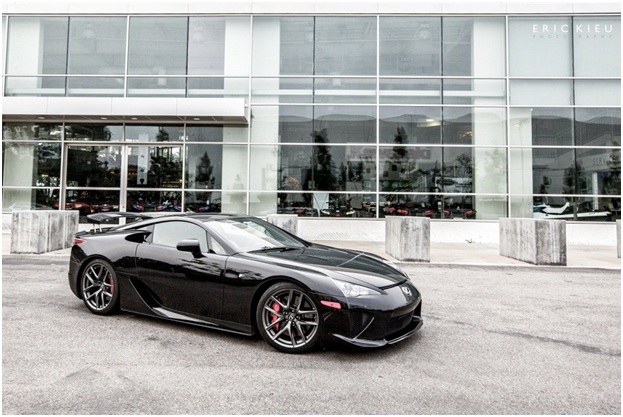
The LFA was a project with no budget in mind and took 10 years to finish. When engineers discovered that the aluminum body was too heavy, years into the design, management threw in another pile of cash to explore carbon fiber technology. They developed their own proprietary carbon fiber looming machines and a stronger aluminum flanged collar. In the end, 65% of the structure is composed of Carbon Fiber Reinforced Plastic (CFRP), which is 200 lbs. lighter over an aluminum equivalent design.
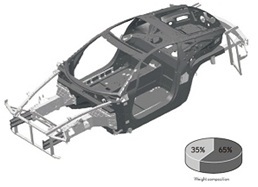
The bespoke 552hp 4.8L 9000RPM V10 engine is equally impressive, smaller than most of the V8’s on the market and weighs less than Lexus’ own 3.5L V6. The engine revs up so fast that no analog dial can track it fast enough. Prompting Lexus to implement a fancy TFT tachometer display, which also slides to unveil additional menu options. With the engine up front and transaxle in the back, a rigid torque tube was developed. Two lightweight titanium exhaust pipes staggered directly under the torque tube to keep weights close to the center. The windshield washer fluid reservoir sits right next to the gas tank in the middle. Even the door lock and window control buttons are placed along the center console instead of the door panels. All these details help on weight distribution and put the driver close to the absolute center of the car.
Lexus also put in extra thoughts in the drive configuration. They wanted to take advantage of the high traction and handling capability of a mid-engine design but also the stability and controllability of a front -engine design, so they went with a front-mounted engine and rear-mounted transaxle setup. This allows the LFA to have a 48:52 front/rear weight distribution, giving it a more neutral feeling.

Unlike the NSX, driving the LFA is a “fancy” experience. Get into the cockpit and there are few steps before you can fire up the engine. You run into an uncommon seat belt setup because of the integrated airbags. After that you scramble for the mystery button to put the car in reverse, followed by the sequence to put it into the forward gear.
But really, one can totally look past all that when the start button is pressed and the sleeping V10 awakes with that angry roar. Lexus wanted to make the LFA sound like a F1 and Yamaha truly delivered. Not only did they design a special acoustically tuned intake surge tank and titanium exhaust, they even created several chambers to feed the incredible engine sound into the cabin. At high RPMs it has that get-into-your-bone pitch, which still gives me goose bumps every time.
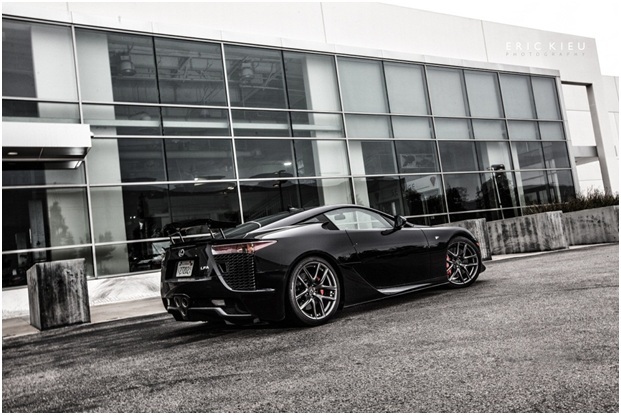
The LFA is powerful and fast, but you get used to tossing it around at high speed fast. Big part of this is due to the fantastic chassis design and drive configuration, but the Sport Vehicle Dynamics Integrated Management (VDIM) system also comes into play. This sophisticated system monitors various sensors and control systems including ABS, TRAC, and VSC to analyze the driving conditions and vehicle status. Through its predictive logics and algorithms, it coordinates and actively corrects under- and over-steer, wheelspins, and stability. Lexus adjusted the system specifically for the LFA to give driver more freedom and confidence in pushing the vehicle. Instead of “saving” the car when it reaches the dynamic limits like most traction control systems do, the LFA Sports VDIM system actively predicts what’s ahead and starts correcting right before the limits.
The LFA has some ridiculously good Carbon Ceramic Material Brembo brakes. In fact, they are so powerful (yet linear) that I worry about cars behind not being able to stop fast enough. Hard braking at high speeds gives the feeling like my eyeballs are being pulled out of their sockets. I absolutely love it.
The LFA also features an electric power steering rack, but the gear ratio is substantially better than the NSX at 14.3:1 and it takes 2.35 to turn lock-to-lock. So it does not matter if I am driving on local streets or highways, I never have to take my hands off the 3 and 9 o’clock positions of the steering wheel.
Transmission is probably what I feel most confused about. People argue forever if the LFA should have a DCT instead but I think it’s just a matter of choice. Having good driving feedback is important and the LFA definitely delivers that. Putting the car in Sport Mode and fastest shifting speed, and you want to make sure you don’t cough up leftover lunch when flipping the shift pedal at redline. But comparing to other supercars the LFA does shift relatively “slow” at 200ms. Is it a big deal? No. But given how much attention Lexus has put in the LFA, I think there is room for improvement.
Good thing with the transmission though is adjustability, allowing normal driving to be more pleasant with smoother shifting. Throttles are also adjusted in different modes to aid driving characteristics on public roads, which I think is crucial in making the LFA such an easy car to drive. It also has cylinder deactivation in Normal Drive mode.
The Black LFA I drove has 23,000 miles and the Yellow pre-production LFA has over 27,000 miles, mostly on the track or through demo, which means they are very hard driven miles. When talking to the technician who is responsible for the maintenance, these cars only receive regular oil and brake pad changes (due to track use). That says a lot about reliability.
The Two Stories
When you combine the NSX and LFA histories, it’s amazing to see how these two companies, two decades apart, applied the same philosophy into their designs. They didn’t follow the pack to create something with
more horsepower; they went back to the drawing board and thought of the basics in high performance cars – weight and balance.
more horsepower; they went back to the drawing board and thought of the basics in high performance cars – weight and balance.

Let’s face it, the LFA and NSX are not the fastest cars of their times. But truth is, a lot of these cars will never see the tracks, and a lot of exotic owners aren’t elite drivers. All the numbers on how fast the cars are and how a car is 0.2 seconds faster on the track really don’t mean that much in my opinion. Both the LFA and NSX inspire tons of confidence in the drivers through brilliant chassis and suspension designs, which I think is the most crucial about these two beasts.
There are a lot of discussions on the sales of the LFA, and after owning the NSX I have grown to look at it differently. The NSX is one of the most desirable sports cars with high resale prices. But when the NSX was still in production, the cars didn’t fly out of the dealerships. Even the 1999 Zanardi edition NSX (only 51 made) didn’t sell particularly well and some were sold at discounted prices. However today, it’s easily the most prestigious version of the NSX to obtain and pricing is extremely strong.
The LFA is in a relatively similar situation. All 500 LFAs have left the production line, and of just under 180 destined to the USA, a majority of them are sold. There are still cars that dealerships are trying to sell and there are plenty of voices saying that the car is too expensive, but to Lexus that is no longer a concern.
No one knows the resale of the LFA down the road and if it can be successful like the NSX, but there is little Lexus can do anymore. It is really in the hands of the LFA owners. I am not saying they should hide their cars in the garages for 10 years hoping for the best; in fact they should be more open in showing the cars. It helps generate topics and interests around the car. A big part to the success of the NSX is how many cars are driven daily; every time a car is spotted on the road people still say “the special car from Honda.” LFA owners should do the same and I am sure Lexus thinks so as well. They want the cars to be seen and driven around. As of now a lot of LFA owners are still very quiet, which I hope can change in the near future.

People ask, “Why did Honda and Lexus even bother to make these cars?” They never needed to, both were very expensive projects. Towards the end of the NSX run, Honda could not justify the cost anymore before ending production in 2005. And even worse, even at $400k a piece, Lexus still loses money on each LFA made.
In reality, these cars are like results of product engineering marketing. The NSX allowed Honda to be ahead in aluminum body construction, and in no time the VTEC technology trickled down to other models. The car also helped turn Honda into a sportier brand, and cars like Civics and Integras became even more popular.
For Lexus, the LFA is a big turning point. They now have the massive looming machines to build strong carbon fiber pieces and technology on sturdy aluminum to carbon fiber joints. The eye-popping TFT display is making its way to the new 2014 Lexus IS. These are signs of technologies trickling down to future products. Lexus has also shown people they can build something fun, sporty, and aggressive. Together with the ISF, Lexus is now into a different direction, and we are seeing it with the all new GS, IS, LS and F Sport models.

As to the question I have been bombarded with the past weeks, “How do you compare the LFA to the NSX?” Think using the movie Avatar. The NSX is the Banshee (flying bird). It’s well respected, not everyone can get to ride and/or control one, but once you do, it really connects and belongs to you. The LFA on the other hand is the Toruk (red dragon). It’s so rare, angry, aggressive, and only very few can get to master it. But when you do, all the people look up to you.
As much as the attention I get in the NSX and LFA, you do not get them for the attentions and status symbols. You get far more attention by spending less in a Ferrari or Lamborghini. However, if you enjoy driving and want something special, the LFA and NSX are the cars. I own an NSX and I smile every time I drive it. But the LFA has that extra rushing soul. I love it and I miss it.
Special thanks to Lexus Corp. for all the support. Diagrams courtesy of Lexus Corp. and American Honda Motor Corp.




